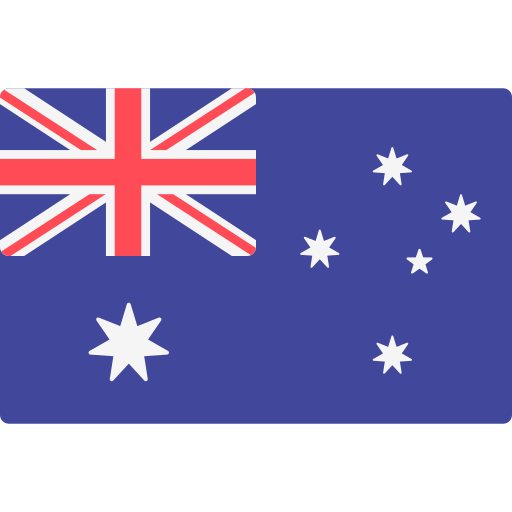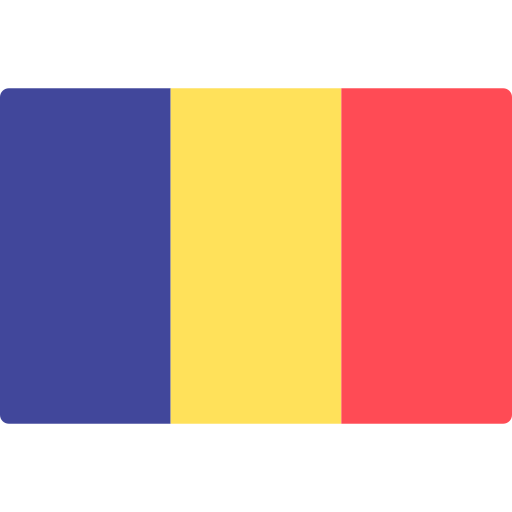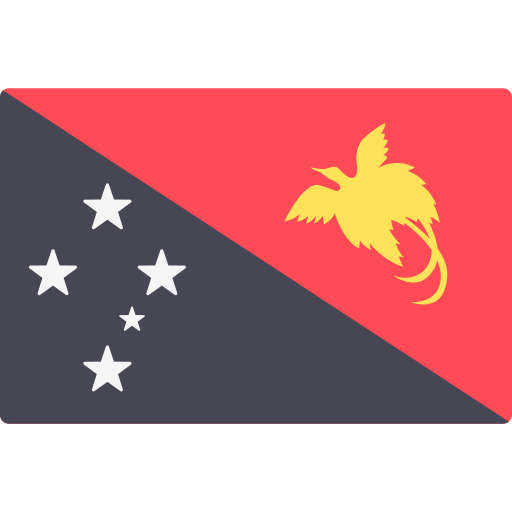The game sounds brilliant, and we're thrilled to bring you this exclusive in-depth interview with 7 members of the game's audio team. Here, they talk about their approach to creating sound for an ever-evolving game, share details on the sound design of each Legend character, discuss the strategic use of sound to help players work as a team + lots (and lots!) more.
If you ever wanted a deep-dive into what it takes to create game audio, here's an excellent opportunity to get exactly that:
Written by Jennifer Walden, images courtesy of EA
In Respawn Entertainment’s free-to-play battle royale game Apex Legends (published by EA), players choose their Legend character, team up in small squads, and then drop onto a map that gradually gets smaller and smaller, forcing teams to fight until only one is left standing. It’s hunt-and-be-hunted, fast-paced action using revamped weapons from Respawn’s Titanfall releases. Respawn recently released the Season 1 Battle Pass, which offers new upgrade skins for characters and weapons and other in-game rewards.
Here, Respawn’s sound team — Senior Audio Director Erik Kraber, Senior Sound Designers Tyler Parsons, Rick Hernandez, and Brad Snyder, Associate Sound Designer Jordan Harmon, Dialogue Lead Joshua Nelson, and Dialogue Editor Victor Durling talk about their approach to creating sound for an ever-evolving game, share details on the sound design of each Legend character, discuss the strategic use of sound to help players work as a team, and so much more!
How did your approach to designing sound for Apex Legends differ from your approach to working on Titanfall 2?
Erik Kraber (EK): Even though there are many similar components of Apex Legends and Titanfall, it was a surprisingly different approach. Titanfall has always been about constant intensity, speed, and motion, both sonically and in terms of gameplay. The mix in Titanfall multiplayer was always tilting to the max through the short, intense battles. With Apex Legends, we finally had a game where listening became a really important aspect to the game. We now had to design both for the loud moments and the quiet moments since Apex Legends had a lot more dynamic range built into it, just given the nature of searching for loot, traversing the open landscapes, listening for enemies and then getting into intense gunfights.
We did as much modeling over distance as we could for all elements, with an emphasis on making sure that the sounds were still unique and identifiable from most any distance.
We had to rework all of our character Foley, not only because we wanted to explore the unique sound of each character moving in the world, but also because player and enemy Foley was hardly ever heard over the bombast of Titanfall MP. We spent a lot of time making sure that there was a lot of depth and subtlety to our Foley in the game since we knew people would be listening to it so intently for potentially hundreds of hours. We also made sure that it was much easier to quickly identify where and how far sounds were in the game. We did as much modeling over distance as we could for all elements, with an emphasis on making sure that the sounds were still unique and identifiable from most any distance.

From Left to Right, (Erik Kraber, Tyler Parsons, Jordan Harmon, Rick Hernandez, Brad Snyder, Victor Durling, Joshua Nelson)
Character personality was also somewhat new for us. Aside from the larger-than-life personalities of some of our boss characters in Titanfall 2 SP, we really hadn’t truly done a character-focused game. The sound design from Tyler [Parsons], Brad [Snyder], Jordan [Harmon] and Rick [Hernandez], and the dialogue work from Joshua [Nelson] and Victor [Durling] all focused around bringing out a distinct sonic personality that was convincing and entertaining.
[tweet_box]How Apex Legends’ stunning sound was created:[/tweet_box]
Lastly, music has always been a big part of the Titanfall games, and we have continued to work with the brilliant Stephen Barton on the score for Apex Legends. Because it is a battle royale game, constant music throughout gameplay would have been too distracting. We still wanted to have music fortify the unique personality of the game and add drama to it, so we worked on making a player feel as hyped as possible when entering a game. From character selection to the jet-fueled skydive off of the ship, we hoped to make jumping into a match feel like something special and exciting each game.
Tyler Parsons (TP): Ambience in Apex Legends needed to be very understated due to the nature of battle royale gameplay — the player spends so much time hunting (and thus listening for enemies) that creating busy backgrounds with lots of interesting but potentially distracting sounds would have been the wrong approach.
Even more so than in non-battle royale games, the ambient beds and emitters for each area of the map should have just enough sound to immerse the player in the world without generating false positives. A player shouldn’t wonder, “Was that a distant creature sound in the ambience, or a real enemy approaching?” When nearby ambient sounds do poke out a little — building creaks, metal cables straining in the wind — they usually lend a little suspense, hopefully giving players a tense, waiting-for-the-action vibe.
The weapons in Apex Legends are very similar to (and some the same as) those from Titanfall. Did you tweak the weapon sounds in any way to make them fit better with Apex Legends? If so, what did you change and why?
EK: Yes, we have a lot of weapons from both Titanfall releases in our game, as those have become part of the identity of the universe. We modified every gun in the game, adding more detail, enhancing the unique personalities of each, and improving their feedback.
First, we had to modify every weapon to sound realistic over a distance that’s three-times greater than in Titanfall 2. That included adding more layers over distance, so that the gradual change in the weapon character could be noticed as you were getting closer to that distant gunfight. Each weapon has at least four layers of sounds that change over distance, from extremely close to very distant. We also filter the weapons with DSP EQs as the sound moves closer and farther, or as the gun is pointed at you or away from you. The more a gun is pointing directly at you, the more threatening it feels, so even if you hear distant gunshots, you get the sense of whether you are in the enemy’s crosshairs as they are firing.

We wanted to make sure the players not only could tell where and how far away a fired gun was, but also have a sense of what environment it was being fired in.
We also did a ton of work to make the environments come to life. We modeled over 16 different environments, including six different interior spaces, based on the material and sizes of the rooms, as well as over 10 exterior spaces that model varying sizes and complexities of canyons, open fields, and alleyways. We wanted to make sure the players not only could tell where and how far away a fired gun was, but also have a sense of what environment it was being fired in. All that information allows people to make smarter tactical choices on how to approach the firefight.
We also added quite a bit more variety to each weapon. When the weapons are fired thousands of times throughout a game, we never wanted them to feel stale or gamey. We wanted organic variation, where the character changes based on distance and environment, but the personality is distinct to that gun.
Let’s look at the different character options. What are some unique sonic characteristics for:
Bloodhound
TP: Bloodhound is our spiritual and technological hunter/tracker. The movement Foley includes gas mask rustles and clunks as well as small wooden beads and trinkets, to match the dangling ornaments on the character’s helm and suggest a bit of tribal flavor.
Bloodhound’s tactical ability, “Eye of the Allfather,” is a scanning pulse that lets them see enemies and traps through walls or other obstructions. The pulse sound is built from elements including a metallic chime (for a sort of “sonar ping” feel), a MeldaProductions MFreqShifter’d panther snarl and bullwhip lash, a GRM Tools Pitch Accum’d wire brush scrape, lots of synth squeaks, warbles, and buzzes, a distant cannon shot, and a handful of others. The sounds of the targeting squares pinpointing an enemy are created from playing card shuffles that were chorused and processed with a bit of Soundtoys Decapitator. Also, since the spiritual component is a connection to the “Allfather” (the Norse god Odin, whose twin ravens gathered information for him), there’s a hint of bird wings flying off as the ability’s effects end.
Bloodhound’s ultimate ability, “Beast of the Hunt,” visually highlights enemies and their footprints. Besides the technological and psychological elements that play for Bloodhound in this state (including processed lion breaths and modulated synth drones), enemy footsteps and certain other enemy sounds become more pronounced in the mix while the Bloodhound’s own movement sounds are suppressed, to help the player track enemies by listening.
Gibraltar
BS: For Gibraltar, we knew early on he was going to be the heaviest looking and largest character in our initial group of legends. Early on we identified his size and his armor as unique characteristics for him. For his movement, the amazing Foley team at Warner Bros. came up with the great idea of using metal plates wrapped in blankets. So I used a lot of those recordings in combination with other metal sources to sell the soft looking but still heavy armor vibe.
Another unique characteristic is Gibraltar’s Bubbleshield. This is actually an ability/sound we have had around since Titanfall that Titans used when you called them into the battlefield. Since this game doesn’t have Titans I actually rebuilt this sound from the ground up but still tried to keep a similar vibe to what Erik [Kraber] had done for Titanfall. The Bubble Shield and all of its states, were actually designed using a MicroKorg synthesizer and then processed further with plug-ins such as Movement from Output to add more dynamics and interesting textures.
We always try to keep our sound design grounded in reality, but finishers are an awesome opportunity for us to extend the personality of the character into the sound design.
Gibraltar was the first Legend we worked on and completed for Apex. Another unique characteristic is the tribal drums you’ll hear during finishers. We always try to keep our sound design grounded in reality, but finishers are an awesome opportunity for us to extend the personality of the character into the sound design. In these moments we are able to take the usually serious tone of the game and use elements that fit the background of the character to make finishers more fun and uniquely stylized specifically for that Legend.
Lifeline
BS: Lifeline is our medic class, so when we were viewing her early concept we could already see she was strapped with tons of equipment. She has the most incredible cargo pants pockets I’ve ever seen. This made getting the Foley for her movement really tough because there are so many pieces of equipment that she starts to sound like a walking box of junk way too fast.
There are two elements that I think really set her apart. One is the IV bag on her chest which was actually water in a rubber Ice Pack. The second is actually air hockey pucks rattling when entering the goal, which I mixed with some traditional equipment in a small box to sell the various packs and the Drone she carries with her.
Another unique sonic characteristic would be her Drone Healing. This was actually a really fun ability to work on because in early prototypes when the Drone attached to you it really just looked like a bendy straw pumping liquid into you. So that’s exactly what I tried to make the sound feel like. It’s a bunch of processed synthesizer layers, using Uhbik (by u-he), GRM Freq Warp, Atlantis Filter (by Jeremy Evers), and the best layer is actually a water pump from a sailing dinghy, pitched and time stretched to sound more synthetic. There is also a water pump layer running through Audio Ease’s Altiverb with the Hoover Tube IR to make the liquid feel like it’s coming through the Drone tube.
Bangalore
Jordan Harmon (JH): Bangalore’s character is militant and pragmatic; I tried to maintain that aesthetic while approaching her abilities. Heavy, percussive and antiquated were adjectives that I kept in mind during the design process. I used a lot of old close-mic typewriter sounds and gear you would find in a firehouse to achieve what I wanted. For her more psychological attributes, I tried my best to display an old school American war vibe by trying to blend WW2 air raid sirens and heavily processed rocket launches to create subtle connections to her American inspired militant past.
I approached Bangalore’s execution much differently. Listening to the rest of my team’s execution designs, I understood that this was a chance to use sound design to try and capture more of each character’s personality. The first word that came to mind when watching Bangalore chuck up the deuces after a successful execution was “swag.” I approached the design with that in mind, trying to create risers and 808 subs to accentuate her attitude.
Wraith
TP: Wraith is a skirmisher who can vanish into another dimension called “the Void” for a few seconds, or create a pair of portals that allow her and others to travel rapidly through the Void from one to the other. The Void is basically the same dimension that Titanfall 2 pilots using the “phase shift” ability were able to enter, but I wanted it to sound eerier and less technological than the Titanfall 2 version.
One of Wraith’s other abilities — a side effect of her time in the Void — is hearing her own voice in her head alerting her to danger. I layered lots of vocals (breathy whispers sent to a multichannel Slapper delay) into the Void ambience, as well as a rising shriek (bitcrushed synth elements) as she gets close to exiting it.
For the sound of entering the Void, I started out experimenting with punchy explosions, but ended up building around the reversed and processed sound of a snowmobile engine starting up.
Wraith’s movement Foley was created from leather jacket creaks and tiny metal windchimes, from material performed (like the majority of our character movement) by the brilliant Foley artists at Warner Bros.
Pathfinder
Rick Hernandez (RH): Pathfinder is the playful, giddy, comic-relief Robot. He is also a bad-ass. My main goal was to really find the balance between playfulness and killer threat in battle. The playfulness comes from his robotic dialogue performances and his expressions (aka emojis) on the screen of his chest.
To balance that out, I made his movements sound threatening through a variety of ways. The core of his servo movement sounds were created by rolling a soil breaking gardening tool back and forth on a metal grate. The resulting sound from that is a raspy, organic sound with tons of texture created by the spikes on the gardening tool. I then got rid of most of the low end and high end leaving me with mostly mid-range frequencies; I made these sound more mechanical by auto-tuning them to two different specific pitches — a low pitch version and a high pitch version. These alternate with each step the player takes, creating a very mechanical cadence.
For his Zipline gun, I recorded a real zipline in Bayamón, Puerto Rico. It’s the longest zipline in the Caribbean. I EQ’d those sound pretty heavily to be mostly mid-high end and combined it with rope elements, and Bass guitar string hammering, plucks, and slapping. I ran the Bass guitar sources I recorded through Soundtoys Crystallizer.
Caustic
TP: Caustic is a sociopathic scientist who’s fascinated by death and loves using toxic gases against his opponents. I used sinister-sounding steam and air release elements in creating his gas trap and gas grenade sounds, with lizard and crocodile hisses as sweeteners. The sound of his inflating gas traps was built from rubber glove stretches and a Swiss ball impact for the springy “pop” of reaching full inflation, passed through a djembe IR in Altiverb to give them interior-esque resonance.
Both Caustic and Bangalore have cloud-based abilities, so I used dark ambient drones and creepy breath sounds to give an evil presence to Caustic’s poison gas and differentiate it from the bright, fizzy body that Bangalore’s smoke has. To give Caustic a bit of “horror movie villain” vibe, I also included some spooky aquaphone elements in his finisher sounds.
Caustic’s hazmat suit Foley was created from various rubber material creaks and metal water bottles for the clanking of his poison gas containers. His movement Foley in regular gameplay already has a heavy step, but I made custom extra-heavy boot clomps for his finishers and character select scene to help him feel even bigger and scarier.
Mirage
BS: Mirage the trickster, was actually a much more straight-forward Foley design. The big thing we wanted to sell was the rattling of the holo-tech gear that he wears on his arms. This was a combination of plastic buckles and various small packs bouncing together. He has a pretty casual cool guy jog cycle so his Foley is very concise and tight to match both his movement and visuals.
It’s easy to make something that sounds so synthesized it loses any sense of being a real world mechanic.
Mirage’s combat abilities involve creating projections of himself to “bamboozle” his opponents. This is also another ability brought over from Titanfall 2 so we completely redesigned the sound. Since the ability is very future tech and sci-fi, it’s easy to make something that sounds so synthesized it loses any sense of being a real world mechanic. So the first thing I thought of when it came to the holograms was, “What real world tech is similar to this?”
His Psyche Out tactical ability actually uses lots of camera equipment, such as a video projector hum processed using Output’s Movement and Melda’s MTremolo plug-ins. There is an old timey camera flash in there, processed to give a lot of low-end punch to activating the ability. All of those mixed with various camera clicks, and of course synthesized elements, give it the future tech edge.
Octane
BS: Our newest character, who just released with Season 1, was the most challenging movement/Foley character design for me. He’s our second character with robot legs; Pathfinder is a big clunky robot from a bygone era, where as Octane is a thrill seeking adrenaline junky so his movement had to sound light and fast without being annoying. His feet are a combination of this great prop from Warner Bros., some sort of wheel with a spring attached, mixed with a smoothing iron, and a metal compactor pitched way up to sound smaller. His servos are a combination of pneumatic servos, pneumatic drills, and a pneumatic door. I wanted him to sound airy, springy, and light, which led to using pneumatic sources over more traditional servo sound sources. A lot of MFreqShifter and Uhbik-G plug-ins were used to get a vibrato texture I layered in.
Octane also uses Stim — another ability that has been around since Titanfall. This is now my third time designing sound effects for Stim. In Titanfall 2 I hyped Stim up to be bigger and more bombastic, but for Apex you can Stim every 2 seconds so I knew we had to go back to the drawing board and make it more subtle. There is now a visual reference when you active Stim. Whereas the old Stim was mostly me doing my version of a Starcraft Stimpack, this new version is now liquid based. So the entire sound was reworked to sell the new visuals including removing most of the airy sweeteners and replacing those with more glass and liquid elements on the activation. The removal has a satisfying suction cup pullout. The sustain uses a lot of similar sources from previous versions of Stim but a lot of the low and high end is removed to help it not interfere with the player’s ability to react to other important combat sounds.
Popular on A Sound Effect right now - article continues below:
-
33 %OFF
-
44 %OFF
Can you tell me about your work on the character dialogue for Apex Legends?
Victor Durling (VD): Our character and design teams (special shout out to Manny, Tom, and Mo!) pour their hearts into the creation of each Apex Legend character. It’s up to Josh [Nelson] and myself to craft and execute the dialogue in such a way that hearing a Legend speak is always a treat and gameplay information is communicated succinctly to the player. With the help of two talented coders, David Perera and Rayme Vinson, we eventually settled on the frameworks that are the ping and battle chatter systems you hear in the game today. The meta for Apex dialogue is:
1. Each character in your squad is a living, breathing individual with a unique personal journey and always has your back in the Ring.
2. Every vocal expression (spoken word or otherwise) stands on its own as an entertaining bite of information.
3. It feels great and fun to ping no matter if it’s the 1st or the 10,000th time.
The efforts are a micro-layer of the sonic landscape which serve to ground and hopefully breathe extra life into everyone. Well, except for Pathfinder — he has no respiratory system and doesn’t have to breathe!
Recording, editing, and implementing each set of character dialogue is a lot of fun and also labor intensive due to the sheer amount of lines that need to blend cohesively and also stand on their own as individuals. Vocal processing is an important aspect of the Apex sonic landscape that supports a Legend’s personal journey and are distinct enough sonically so that it’s never confusing when you hear two Legends speaking back-to-back in the midst of battle. Dialogue utilizes many of the same plug-ins that Erik, Tyler, Brad, and Jordan mention to craft the character sound effects. Finally, it took a lot of effort and iteration when crafting the character effort vocals (i.e., the melee attack vocals, climbing breaths, landing “oofs,” pains, deaths, etc.).
If you listen carefully to Titanfall 2, character efforts are blended heavily into the sonic landscape and mostly serve to support the sound effects. Compared to Apex Legends, where dynamic range can sometimes be as wide as a canyon, the characters need a much larger variety while keeping a more similar timed duration. The efforts are a micro-layer of the sonic landscape which serve to ground and hopefully breathe extra life into everyone. Well, except for Pathfinder — he has no respiratory system and doesn’t have to breathe! Also, special thanks to our amazing cast of voice talent who create magic in the booth, and also to our Warner Bros. family for always being there for us.

Apex Legends was built using Valve’s Source engine, the same game engine as Titanfall 2. How was this beneficial for the sound team’s workflow?
EK: The game engine is modified Source, but the audio engine and tool is the Miles Sound System, which we integrated back on Titanfall 2. Being able to iterate on a workflow over multiple projects is always beneficial. Aside from the muscle memory that your team has with it, allowing us to work faster, we get to know all the nuances of the tool and how to maximize its potential. We are very lucky to have such a great relationship with Rad Tools, specifically Dan Thompson, who is the guru behind all of the Miles magic. He has been so receptive to all of our ideas and has made a tool now that is incredibly deep and getting better every cycle.
We have also had a number of upgrades to our audio engine thanks to programmers Chad Barb, Ravikiran Ramaswamy, and Joel Conger. Chad is our senior programmer who has written numerous audio features over the years in addition to his frequent help with the development direction of Miles and its integrations into Source. He’s constantly giving us the latest features that Miles has to offer. Recently, he wrote a new ambient sound system that allows us to seamlessly blend the ambient textures of each of our unique zones, providing a smooth ambient experience with no drastic changes. The sounds feel like they slowly morph from one area to the next. He also has written many debugging tools to help the audio team and other departments get good data on the audio performance.
Ravi is newer to our team but has helped provide a number of great new audio features. He wrote our new version of Soundscapes, a tool which allows us to define reverb and occlusion settings for every area and room on the map, providing a lot of tunable parameters to make each area feel unique. He also wrote tech that allows sounds to move along splines (a line we draw in our level editor), enabling greater voice efficiency and respawning of looping sounds (ensuring that long ambient sounds can free voices when needed and come back when voice counts are lower).
Joel created our system of playing custom third-person footstep sounds based on whether they’re coming from an upper floor, a lower floor, or a rooftop. We have unique assets that play for when a character is a floor above you, a floor below you or on the roof of the building you are in for greater detection of enemies in your local area.
All of our programmers have helped improve the audio quality and the quality of life for those of us working with audio tools.
Since Apex Legends is in ongoing development, how does this affect your workflow, and how does that workflow compare to Titanfall?
BS: Being a live game means certain audio features we really want might get deprioritized for other more important reasons, like stability/optimization/gameplay design features, etc. We actually have features/sounds we know we want to do (and for a boxed-disc product we’d have to have them in there) but since it’s a living game we have to compromise and be ok with other aspects of the game taking priority. It’s a struggle for us to see players provide feedback that we want to react to but know we can’t address until a future patch. The counter to this is we have endless opportunities to continue to add amazing features, make mix adjustments and add cool new details in the sound design we would have had to cut on a boxed product.
Although a player can play solo, Apex Legends is meant to be a squad-based game. How does sound support squad interaction?
Joshua Nelson (JN): At the beginning of a match, players who don’t necessarily know one another are randomly joined up into a squad of three. Squad cooperation is very important in Apex if you want to achieve victory. Not everyone has a mic or wants to use it to communicate with other random players. The design team wanted to provide an easy to use system, integrated right into gameplay, that players would enjoy using to cooperate with one another. It’s the ping system!
The ping system allows the player to visually highlight points of interest, objects, and enemies on the map. To get your attention, the ping is accompanied by a sound effect that plays from the pinged location and dialogue from your character that matches contextually with the location or object that was pinged. The player can quickly communicate tactics, tag gear that might be useful to squadmates, and share intel on enemy activities.
We wanted it to feel natural and just a part of the gameplay that your character is calling out this useful info to your team.
Because the character you are playing says the callout, their voice and personality help keep the player feeling immersed. We wanted it to feel natural and just a part of the gameplay that your character is calling out this useful info to your team. Your character already has something clever to say about a nearby location that might have enemies in it — no mics necessary for that!
BS: We knew early on we wanted to support pinging different in-game objects. When the ping system first went into the game, we had one ping sound. I quickly realized we could make major improvements by adding unique ping sounds based on the type of object you are pinging. But I also knew that could become a can of worms and if we covered every type of pingable object with a unique sound it would then become useless information and noise.
Ultimately, we settled on 3 different ping sounds: “Pinging a Location,” “Pinging an Item,” and “Pinging an Enemy.” There are also two perspectives to the 3 ping sounds. When you personally ping an object you get a fuller more detailed sound; when another player on your team pings something, it’s actually a lighter, less-detailed version of the same ping sound to help prevent your team’s pings from becoming too annoying and present.

What are some ways that sound is used to help players understand what’s going on in their current game? Are there loot drop sounds? Signals for a close threat? Health alerts? Ring closing sound?
BS: The Ring is a big presence in our game world. It’s this huge sci-fi force field that kills anyone that can’t stay ahead of it as it swallows up the map. Knowing this, I wanted to make sure the audio really helped enforce the game play. Once again, the design work all started with a base of MicroKorg synthesizer performed sounds. I found patches that I thought were interesting and then performed various parameter changes and recorded that straight into Nuendo.
The Ring has two states; it’s either static or it’s moving and both have unique designed sounds to help differentiate the states. We scripted it so that from static it would transition into a new sound when it’s moving.
The moving Ring sound has a bunch of dynamic pitch adjustments and filters so that, as it closes in on the player, it becomes more ominous and present. When the Ring is static, we actually reduce its volume when you aren’t looking at it. This allows players to hang out around the edge of the Ring and not have the sound drown out other more relevant gameplay sounds.
So there is a performance to match near vs. far distance to the object, and calm vs. urgent deliveries depending whether the speaking character is in combat or not.
JN: Besides just notifying you about what object got pinged, most pings can trigger different performances of a line of dialogue, based on the current game context. So there is a performance to match near vs. far distance to the object, and calm vs. urgent deliveries depending whether the speaking character is in combat or not. So when you hear your squadmate ping, you get a sense for whether they are safe or in the middle of combat, and how far it is to the point of interest that they are pinging. The different performances also offer opportunity for characters’ personalities to shine.
Watch the Apex Legends Gameplay deep-dive trailer above
Apex features an AI Announcer voice, echoing across the entire map, which gives automatic updates about global game events. So, everyone gets the memo about Ring movement, round timing, and player elimination. But then as a response to her announcement, you or one of your squadmates might offer some character-specific personality commentary.
We want the info to be useful and avoid nagging the player excessively. So when it’s time for a reminder that the Ring is about to move and your team might get caught in a dangerous situation, Mirage might have a wise-crack about it, or Octane will boast that he’s going to be fine because he’s so fast and he can leave everyone in the dust. We’re providing what we hope is entertaining banter that sneakily does double-duty to alert you to a change in gameplay events, without feeling like we’re nagging you. It’s all a big trick, but a nice, helpful, entertaining trick to bamboozle players into enjoying gameplay awareness reminders.
JH: The audio for the loot in the game was very simple. It was all about matching the visuals of the pickups, using quick cadences, and having enough variation to not sound repetitive. The closer the sound represented the visual the easier it would read in-game when hearing an enemy or squadmate picking up certain items.
As a new sound designer, working on all of the healing items was a huge learning experience. Outside of matching the visuals in a satisfying way, I had to learn the process of creating abstract sounds that not only accompanied the diegetic audio, but acted as an audio cue letting the player or an enemy know what healing consumable was being used. On top of those challenges, I had to find a way to wrap it up in a nice futuristic dystopian bow so it was in sync with the games visual style.
Having the opportunity to craft our map’s sonic environment, one small cube at a time, was challenging. Creating soundscapes (volume triggers in our level editing software) in which Tyler’s beautifully designed ambient audio and Erik’s unbelievably realistic reverb and weapon tail design would exist was like attempting to complete a jigsaw puzzle of a Picasso painting — no matter where you place the pieces it would still be art, but there is definitely a right way in which these pieces should go. It involved a lot of testing and reiteration, placing two characters in a zone and listening to their movement and weapon fire and asking myself, “Does this sound realistic? Is this enough sonic information? Or, is this too much for every given scenario?”

What was your approach to the UI sounds for the menus and the inventory, squad, and Legend tabs?
BS: After years of testing the game with Titanfall 2 UI sounds stubbed in (which I also designed), I was ready to make some big changes to the aesthetic of Apex UI. My design philosophy was actually really simple: don’t be annoying, and don’t be piercing. It’s really easy to fall into some of the same sound design patterns when you are working on UI so I made sure for this game I was using completely new plug-ins, processes, and sound sources from what I used on Titanfall 2.
Since we’re a battle royale game with tons of customization options, I knew players were going to spend lots of time in the lobby, waiting for friends to join, equipping skins, customizing banners, etc. Certain functions got specially designed unique sounds — leveling up, equipping character skins, and hitting ready up to start a game — but for most of the menu interactions I took a modular approach.
Ultimately, I designed somewhere around 100+ unique UI elements, including clicks, synthetic beeps and whooshes, various texture layers, low-end sweeteners, and then I worked with our awesome UI scriptors to make sure every button in the game had the potential to play a unique sound event. Then in Miles, I used all the elements to piece together unique UI sounds for almost every type of button/interaction you have with the menus.
For me, variety is king in keeping the menu feeling satisfying and fresh to navigate. There are little details, like equipping a common character skin sounds different from equipping a common weapon skin. Each rarity tier of loot has a unique sound when you equip it. We have three sizes of buttons you can hover the cursor over and each one has a unique sound. Each type of menu tab (Weapons, Legends, Options Menu, Store, etc.) has a unique sound. To me, this makes our menu really dynamic and you can spend a long time navigating and messing with your customization without hearing the same sound over and over. It was really fun to work on and it continues to be satisfying. We recently updated the game with the Battle Pass, and so there are new unique designed sounds for the Battle Pass menu, including sounds for hovering over the rewards and leveling up.

Technically, what was the most challenging aspect of the sound on Apex Legends? Why? What was your solution?
EK: Getting the mix balance right was a challenge, for sure. We wanted guns to be dynamic and powerful, yet subtle sounds, such as footsteps, needed to stand out as well. Oftentimes good player feedback and sonic immersion and realism compete with each other. We had to keep pushing and pulling up and down decibels to get what we felt was the best balance of solid player feedback without losing the punch and power of important sonic events in the game.
Did you have a favorite sound in this game? What went into the design?
BS: This is so hard because our team makes so many awesome and satisfying sounds. I’m going to cheat and pick a few — the Havoc single charge shot, the Wraith Portals, and if I have to pick something I designed I would say the Ring sounds (see above for a bit of insight into the design!)
JH: My favorite sound in this game is the impact sound when you down an enemy. I don’t know what went into the creation of the sound but it’s the most satisfying thing to hear while playing.
TP: I’m terrible with choosing favorites, so “stuff others made” will have to do!
What are you most proud of in terms of sound on Apex Legends?
EK: Well, first and foremost, I’m proud of our audio team and what a great job they do at supporting, inspiring, and challenging each other to make great audio. I’m really lucky to be able to be in the trenches with these talented guys every day.
In terms of the game, I’m probably most proud of how well we balanced the aesthetic to have outlandish, distinct sci-fi sound elements that feel very grounded in realism. While these elements could be presented in a way that felt cartoonish, we instead were able to make them all feel like they behave according to what sounds like fairly real physics of the world. We certainly break from that realism at times, but I believe the overall impression is a dynamic, exciting, humorous yet oftentimes brutal, realistic world that comes to life through the audio.
Combat feels immensely more satisfying when you can tell you are hitting the guy you are firing at … it breaks the realism but it makes the game feel so much better to play.
BS: I’m really proud of the feedback our combat provides. To me, combat feels immensely more satisfying when you can tell you are hitting the guy you are firing at and I think like Erik said above, it breaks the realism but it makes the game feel so much better to play. Erik did a great job mixing the game in a way that you can really tell when you are hitting a guy’s shield, breaking the shield, hitting an unshielded enemy, and then you get that satisfying finishing blow sound effect. It’s such a small aspect of the sound design of the game but it has a huge impact (pun definitely intended).
TP: I’m proud of the balance between sonic personality and feedback that we managed to build. So often we’ve heard streamers or players in our own games calling things out to their teams based on sound: "traps, I hear a Caustic," "I can’t see them, but their Bloodhound just ulted," "I heard Lifeline’s drone; they’re healing," "I keep hearing a Pathfinder grappling close by." The ability sounds and Foley feel aesthetically suited to each Legend and are sonically distinctive, giving players advance information on what they’ll be up against.
A big thanks to Erik Kraber, Tyler Parsons, Brad Snyder, Jordan Harmon, Rick Hernandez, Victor Durling and Joshua Nelson for giving us a look at the combat-centric sound of Apex Legends – and to Jennifer Walden for the interview!
Please share this:
-
75 %OFF
-
58 %OFF
-
33 %OFF
-
44 %OFF






























































































































































































































































